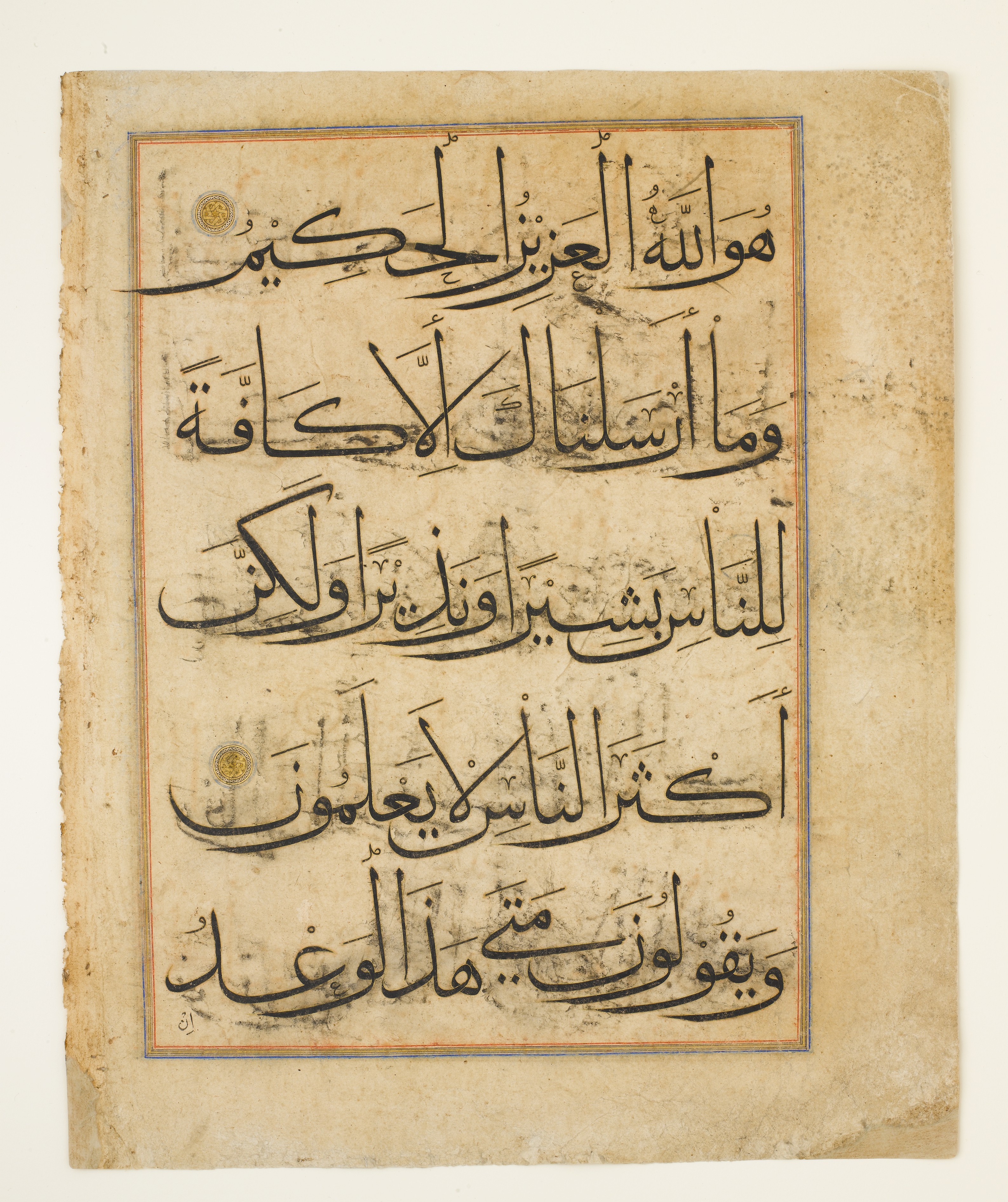Qur'anic Compilation Page
Calligrapher Abu Muhammad 'Abd al-Qayyum ibn Muhammad ibn Karamshah al-Tabrizi
Not on view
The manuscript this folio comes from contains the five suras, or chapters, from the Qur'an that start with the phrase al-hamd li-allah (praise to God). The pages of the manuscript were laid out and decorated in the same way as a complete Qur'an: each page has five lines of beautiful muhaqqaq script outlined with brush-applied gold, rosettes mark the end of each verse, and bands of illumination indicate the start of each chapter. Folios from the manuscript are now dispersed, but the name of the calligrapher, Abu Muhammad 'Abd al-Qayyum ibn Muhammad ibn Karamshah al-Tabrizi, is given in the colophon on a page in a private collection. The colophon does not provide the date of the manuscript or the name of its patron, but the style of the illumination and calligraphy is comparable to that in Qur'ans made for Mamluk patrons in the late fourteenth century and in slightly later copies made for the early Timurid rulers. The manuscript is thought to have been commissioned by a member of the Jalayirid royal family, probably Shaykh Uvays, who reigned from 1356 to 1374 and had a capital at Baghdad.
Due to rights restrictions, this image cannot be enlarged, viewed at full screen, or downloaded.
This artwork is meant to be viewed from right to left. Scroll left to view more.



